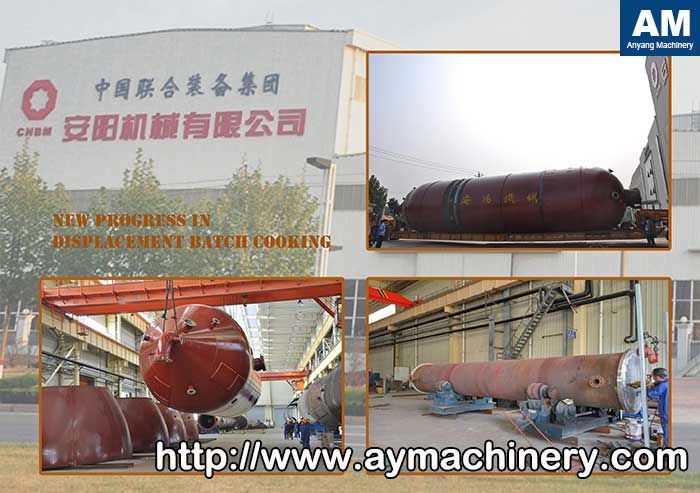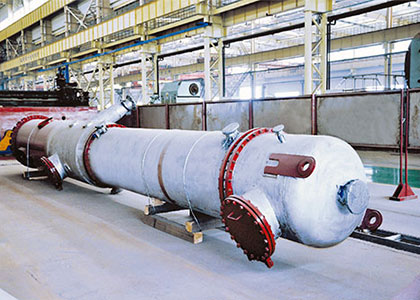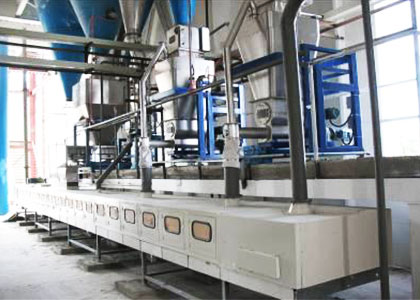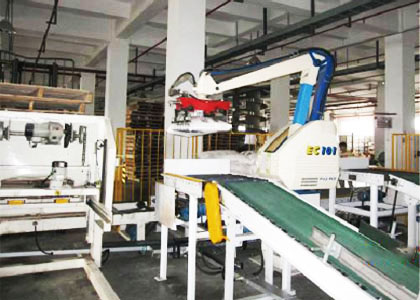In the 1980s, Radar Company in Sweden began trying to collect black liquor in the paper pulping process from the digester before pulp blowing and hoped to reuse the residual heat contained in black liquor in the next pulp cooking processing cycle for the purpose of reducing energy consumption. Finally it formed a new technology, that is, Radar Displacement Heating (RDH). The key point of the technology is to replace the hydrothermal solution in the digester with cold liquid before the blowing, and the displaced liquid is stored in a tank area by the composition of a pressure vessel and an atmospheric pressure vessel. According to the temperature differences of the replaced liquid, they are respectively loaded into different containers. There are still other advantages of the technology, for example, the recycling liquids with residual chemicals that increase the selectivity of the cooking reaction, and more lignin removal from the feedstock during pulp cooking processing for getting a lower hardness Slurry, improving the pulp strength and reducing the consumption of chemical pulp bleaching processing.
History of the Displacement Pulp Cooking Processing
Radar Company in Sweden was owned by Finland's Rauma Repola Company which later sold Radar Company to Beloit Company in the United States and agreed that Rauma Repola Company was titled to retain the RDH technology developed by Radar Company at that time. Meanwhile, Sweden's Sunds Defibrator Company was also developing and selling another replacement technology called Cold Blow. After Rauma Repola Company sold Radar Company but then acquired Sunds Defibrator Company. So it combined the RDH technology with Cold Blow system together, and introduced the new system Super Batch. In the meantime, Beloit Company was still selling the system under the RDH trade mark. But the meaning of RDH has been changed to Rapid Displacement Heating. Beloit Company had also made the improvements on the system and develop a series of RDH brands, for example, RDH-II , RDH-III, RDH-IIIM and RDH-2000. Other companies were also trying to sell the batch cooking systems by using a revamped liquid system under various trademarks, for example, EnerBatch and CBC. However, only SuperBatch products from the RDH family were the most successful ones. Due to the different degrees of improvements from different suppliers in the displacement batch system they installed, the system has been improved in various aspects such as the recovery of heat and chemicals, the impregnation of wood chips and production capacity, etc. Therefore, any two systems are not exactly the same.

The initial displacement technology patents were owned by Beloit Company. The technical patents didn’t cover Asia Pacific countries in the scope of services. Beloit Company was disintegrated in 1998, and was acquired by Canada's GL&V Company. The original relevant patents owned by Beloit Company were bought GL&V Company. Based on many years of experience in the displacement cooking processing, CabTec International llc has improved the RDH system based on Beloit's RDH cooking system. In addition, CPL (Chemical and Pulping Ltd.) combined with the improvements made by CabTec International llc, and introduced a more flexible Displacement Digester Displacement System (DDS), and shortly after that DSS (Digester Steam Saver), an energy-saving replacement digester system with the main purpose of saving steam was introduced. DSS is currently applying for a patent. CPL Company owns Sulfate Batch Cooking System technology and is the sole distributor of CabTec International llc's batch cooking system.
Related Technologies of the Displacement Cooking In Paper Pulping Process
Conventional puplp batch cooking processing
Conventional batch reactor operates in a paper pulp batch process. That is to put the reactants into reaction vessel to produce the product, complete a cycle and then continue to repeat the operation. The product from the reaction is fiber and the by-product is black liquor. The fiber is discharged from the digester along with black liquor, which contains residual heat and incompletely reacted chemicals.
Basic characteristics of the displacement cooking
For the displacement cooking process, although there are different brands and different suppliers, the basic principle of the displacement batch technology is same. People put raw materials (wood chips or bamboo chips) into a batch reactor, various liquids drawn in from the tank area pass through the chip layer in the reactor, and eventually raw materials will turn into fibers which are then discharged from the reactor to prepare for the next batch reaction or "cooking". The temperatures and chemical characteristics of the different liquids stored in the tank area are different. In each step of the cooking cycle, the raw material for paper pulp is heated or cooled at a different chemical concentration to perform the cooking reaction.
CPL's DDS Displacement cooking system control the cooking cycle in different stages of cooking conditions by a strong tank area, which makes the cooking process control get more flexible. It achieves the functions that are usually achieved by continuous cooking system. The quality of cooking pulp is greatly increased by optimizing the process parameters in different cooking stages, and the heat of the system is fully utilized with significant energy savings.
Tank area
Tank area is to serve the digester for producing the product. It consists of a number of containers for storing liquors, most of which are pressure vessels that keep the liquors in the tank at a high temperature and pressure. The liquor amount in each container entering the tank from the digester is based on the balance of temperature and material. When the unused liquor is discharged from the tank area, the excessive heat will be transferred to the incoming liquor or to heat cold water. According to the type and quality of the raw material, and the type and quality of the desired finished product, there may be different tank structures. Depending on the paper pulp cooking processing stage, the system includes a recovery black liquor tank, cold black liquor tank, warm black liquor tank, hot black liquor tank, cold white liquor tank, hot white liquor tank, blowing digester and some heat exchangers.
Anyang Machinery Co., Ltd. (AM) is affiliated to China National United Equipment Group Corp. Now the wholly state-owned key mainstay enterprise of China National Building Materials Group Corporation (CNBM) belongs to China National United Equipment Group Corp. under China’s State-owned Assets Supervision and Administration Commission of the State Council. AM has its own the R&D center of product design and provincial technical center. AM’s leading products include large chemical vessel, tower, reaction kettle, heat exchanger, a complete set of pulp production line, batch cooking equipment, a complete set of pulping equipments for large chemical pulp production line, APMP poplar CMP equipment, multi-disc vacuum filter and complete sets of equipments for hollow brick, fly ash brick and aerated concrete block of production line. Meanwhile, AM is also working hard in a large number of the design, manufacture and installation of pressure vessel and machinery equipments referring to the industries of metallurgy, building materials, power and environmental protection, etc.





